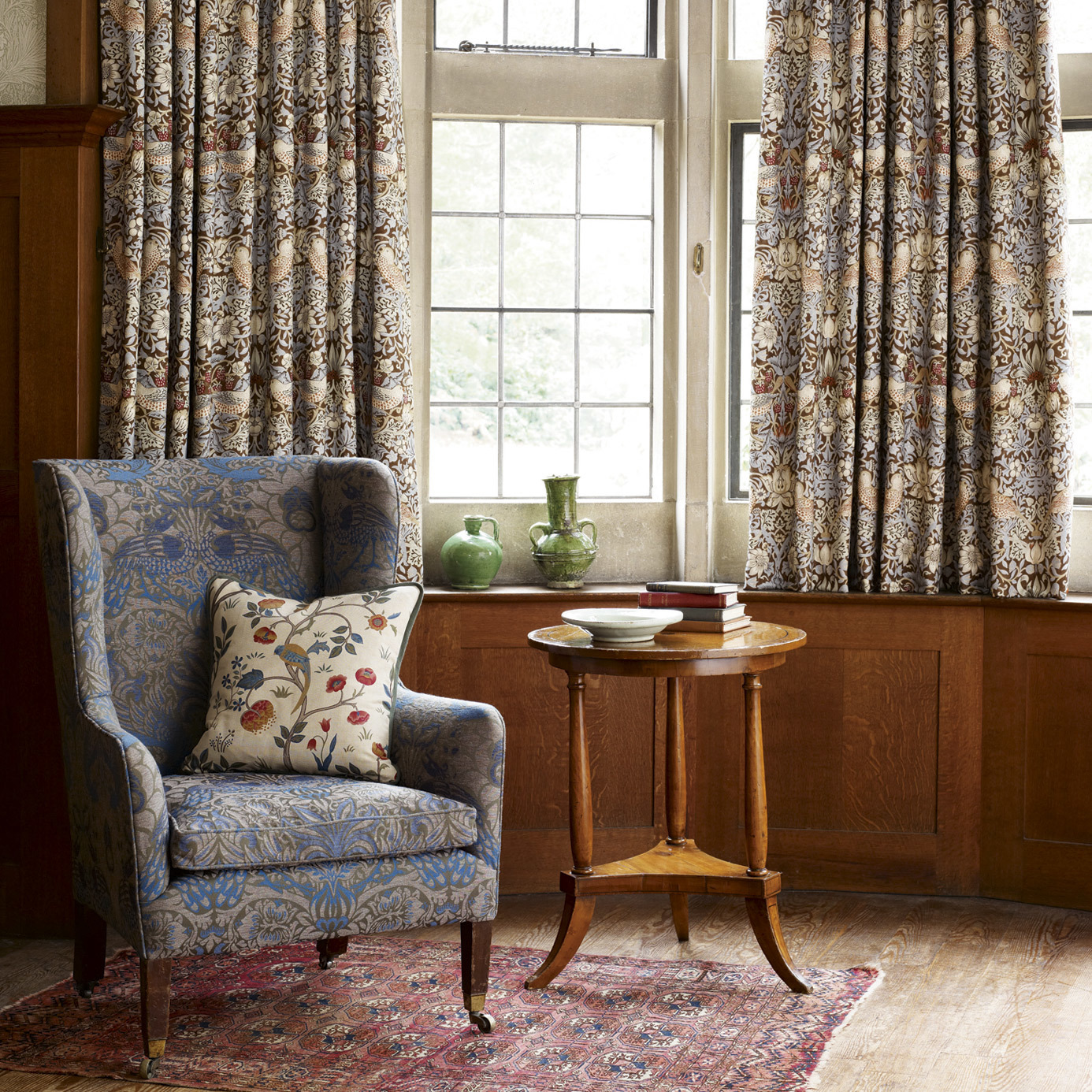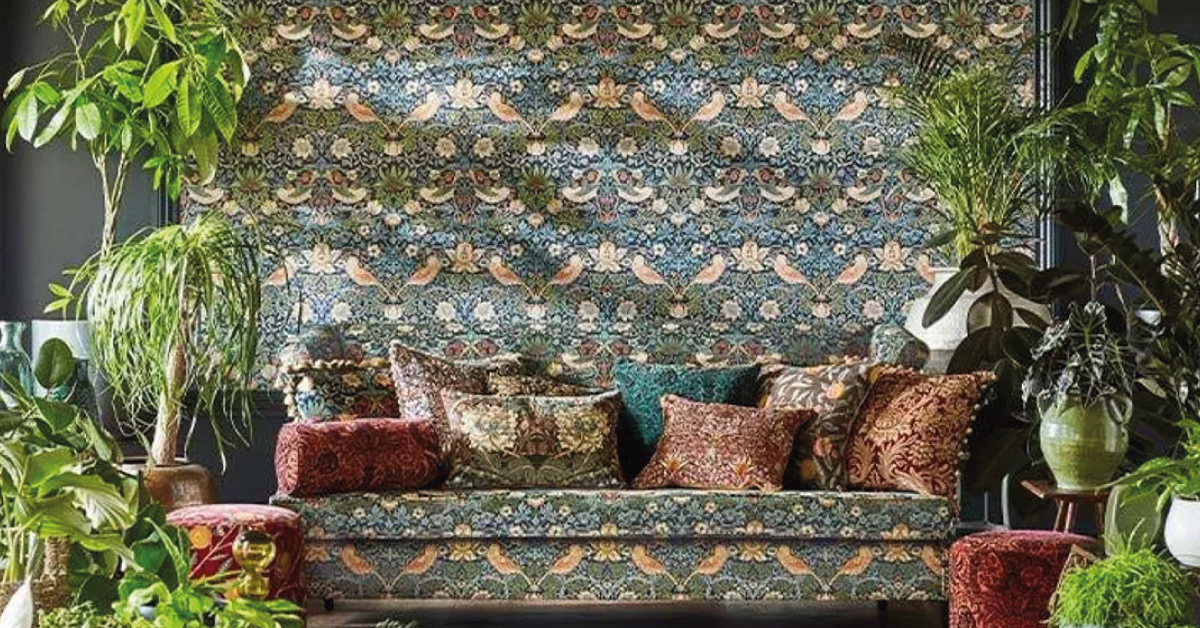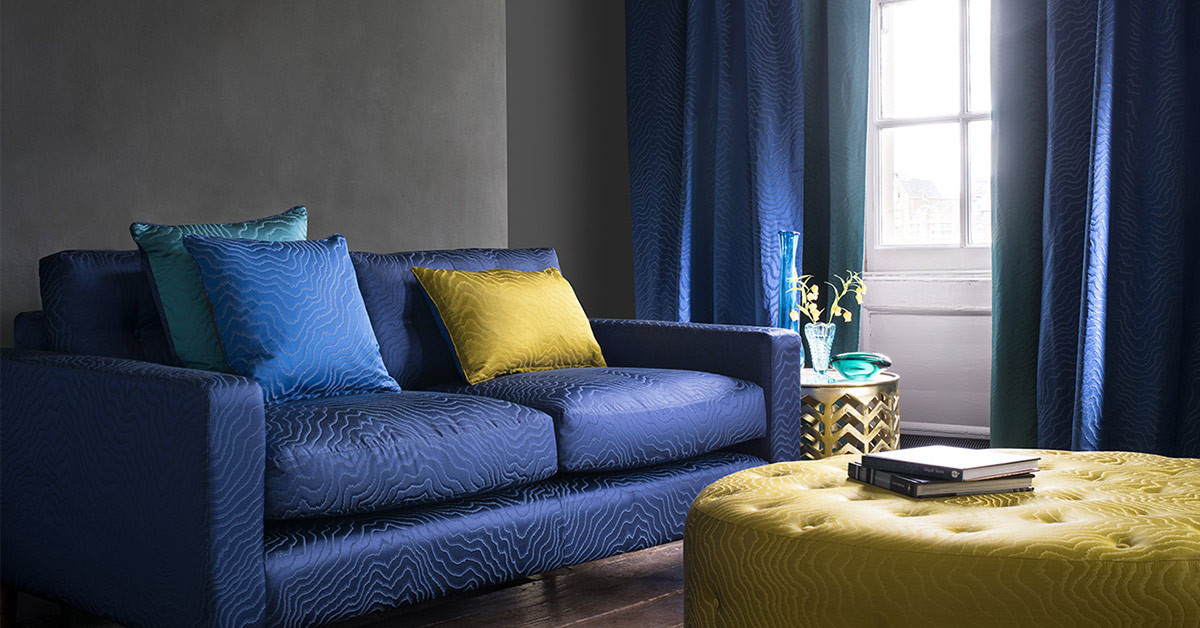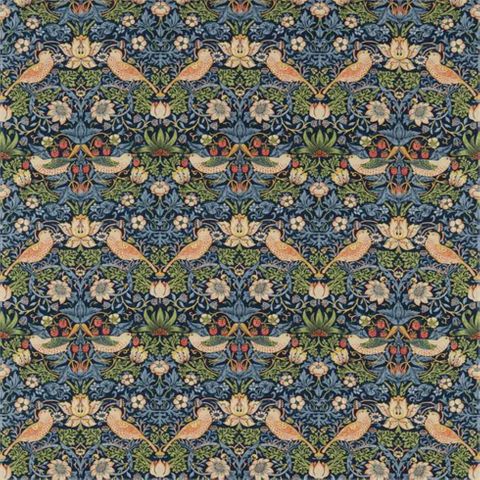William Morris and the Strawberry Thief fabric are synonymous. The detailed, alluring design first went into production in 1883, following eight painstaking years of trial and error experimentation with the technically advanced indigo-discharge printing. The newly patented printing technique was a delicate process that took days to complete, leading to a hefty price tag for Morris' seminal fabric.
Despite its initial expense, Strawberry Thief was almost an immediate commercial success and found great popularity used in Victorian soft furnishings. Morris himself envisaged the fabric being used as luxury curtains or wall coverings - Morris was a great admirer of medieval wall drapes.

How Strawberry Thief Came To Be
As the story goes, William Morris was inspired by thrushes taking fruit from a kitchen garden at Kelmscott Mannor, his Oxfordshire home. Much to the chagrin of the gardener Morris would immortalise these opportunistic birds, ever the enemy of the watchful garden staff. In fact, a close inspection of the design reveals one pair of thrushes with strawberries in their mouths - hence the name Strawberry Thief.
The birds themselves were drawn by good friend and architect Phillip Webb, sometime in the late 1870s.
Morris would play around with the design for some months before he was happy, but the realisation of Strawberry Thief took years. Morris had to first perfect the difficult indigo-discharge method of printing.
What is Indigo-Discharge Printing?
Indigo-discharge, and indeed all discharge printing involves dyeing a piece of fabric in a particular colour, then bringing out the pattern by bleaching some of that dye away. Indigo-discharge printing simply refers to the base colour used, indigo.
In Victorian England this was seen as a particularly technical way of fabric dyeing. Morris, a traditionalist, made this task even more difficult by the fact he championed hand blocks when it came to printing. Shunning any modern techniques. Commercial and block printing had all but died out in England by 1840. Still, William Morris persevered, it would not be until he moved his operation into a factory near Wimbledon that he finally found the success which so alluded him.
In 1883 Morris was the first person to incorporate indigo, alongside red alizarin and weld (yellow), as the ground colour before a discharge method was used to reveal the patterning. The results were phenomenal and Morris rushed to the patent office to register what we know today as Strawberry Thief.



